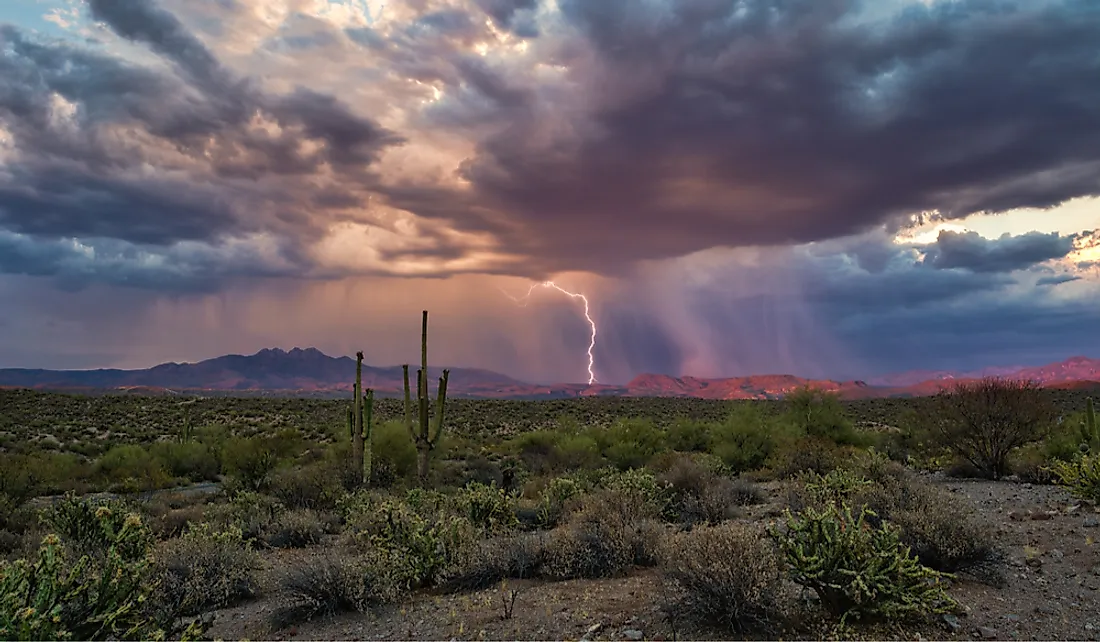What Causes The Arizona Monsoon?

The Arizona monsoon, also commonly known as the North American monsoon, Mexican monsoon, or Southwest monsoon, is a pattern of intense and significant rainfall and thunderstorms that occurs in northwestern Mexico and the southwestern United States. The monsoon occurs from July until mid-September and is characterized by increased thunderstorms, rainfall, and even floods. In fact, the US states of New Mexico and Arizona receive about half of their annual rainfall during the summer monsoon. Although rainfall events are short, the water brought by the storm floods rivers and streets. The monsoon can extend as far as the Traverse Ranges and Peninsular Ranges in California but does not reach the coastal strip. The monsoon loses its strength by mid-September when the region becomes much drier and cooler.
Causes of the Arizona Monsoon
The Arizona monsoon is not as strong and persistent as the monsoons in South Asia, partly due to the fact that the Mexican Plateau does not have the same high elevation as Asia's Tibetan Plateau. However, it shares several characteristics with the South Asian monsoons. The Arizona monsoon forms when the Sun heats the Pacific Ocean and land at different rates. The land warms at a faster rate than the ocean, creating a low-pressure zone as the hot air rises, forcing winds to shift and fill the vacuum that is formed. With the shift in the wind, the Arizona monsoon emerges in northern Mexico, usually in the month of May. The monsoon air, which is full of moisture, travels north towards New Mexico and Arizona and is accelerated by the pressure difference between the hot southwestern air and the cold Mexican air. The Arizona monsoon is affected by a number of factors. One factor that has a significant impact on the monsoon is the El Nino-Southern Oscillation, which brings moisture from the Gulf of Mexico.
Effects and Rainfall Pattern
Rainfall during the Arizona monsoon is typically most intense in Arizona and western New Mexico. The strength of the monsoon varies from year to year, as some years produce weak monsoons while others experience substantial rain. Therefore, it is difficult to predict the intensity of future monsoons. Torrential thunderstorms may be experienced, especially over the mountains, and are occasionally enhanced by the passage of tropical waves. Flash flooding is common during the Arizona monsoon, as dry washes can instantly turn into flowing rivers. As a result, tourists are advised not to camp in the dry wash during monsoon season. Rainfall is not continuous but varies considerably depending on a number of factors. There is usually a period of sustained rainfall and a period of relief from the rain. In the Sierra Madre Occidental, rainfall can reach between 10 and 15 inches. Rain during the monsoon is capable of reversing the downward draw from reservoirs, and farmers also depend on the rains for their crops and livestock feed. In addition to rainfall and thunderstorms, the Arizona monsoon also causes lightning, dust storms, strong winds, and sometimes dangerous fires.











